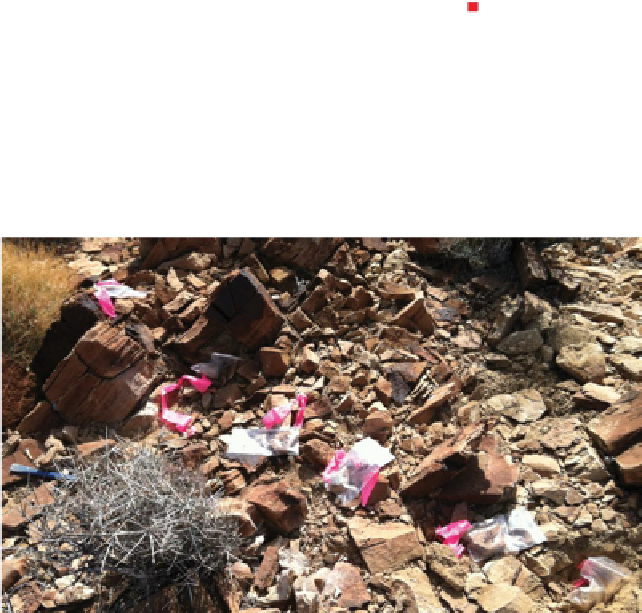Geology Reference
In-Depth Information
Figure 7.1
Cartoon showing
the use of a Jacob's staff to
determine stratigraphic
intervals for cyclostratigraphy
sampling. The operator
simply orients the Jacob's staff
perpendicular to bedding
with a built in inclinometer
and determines the location
of the next sampling site by
looking through the telescope
on the Jacob's staff.
Te lescope
Sampling interval
Sampling sites
Bedding
Figure 7.2
Cyclostratigraphy
samples collected from the
Neoproterozoic Johnnie
Formation. Samples were left
on the outcrop until the end
of the day to be able to check
labels against stratigraphic
position and for a correct
stratigraphic sequence.
on the outcrop until all of a day's samples were collected and the labels were
compared against stratigraphic position to double check the label's accuracy
before the samples were packed out at the end of the day.
7.3
Laboratory Preparation
After the samples collected in the field have been transported back to the lab-
oratory, they must be prepared for remanence measurements in the rock
magnetometer. Rock magnetometers are designed to measure standard size
paleomagnetic samples, either plastic sample cubes, usually 7 or 8 cm
3
plastic
boxes, or 25 mm diameter, 20-23 mm long cores. For cyclostratigraphic
studies only the intensity of magnetization is measured, so it is best to average
out magnetization heterogeneities as much as possible. For this reason in
some studies, the rock samples collected are broken down to millimeter-size
pieces and used to fill the plastic sampling boxes that are used for paleomag-
netic measurements. Several different boxes are available that range in size
from 2 × 2 × 2 cm (8 cm
3
) to 7 cm
3
plastic boxes with rounded edges used by










